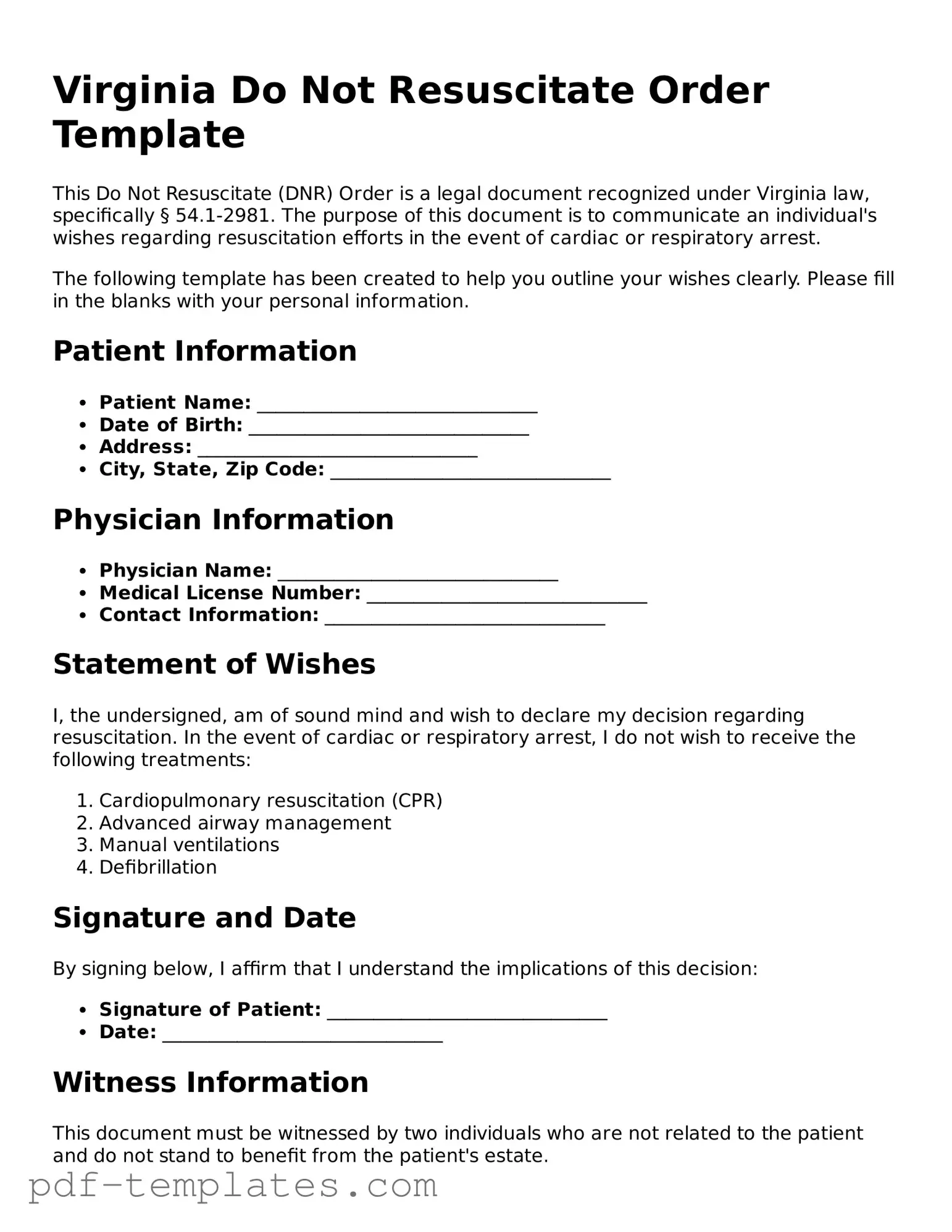The Virginia Do Not Resuscitate (DNR) Order form shares similarities with the Advance Directive. Both documents serve as legal instruments that communicate an individual’s healthcare preferences when they are unable to speak for themselves. An Advance Directive typically includes instructions regarding medical treatment and appoints a healthcare proxy, while the DNR specifically addresses the individual's wishes regarding resuscitation efforts. Together, they ensure that a person's end-of-life choices are respected and followed by healthcare providers.
As individuals navigate their healthcare choices, understanding the various forms available is essential. Among these, the California Independent Contractor Agreement plays a significant role in defining the relationship between contractors and clients, ensuring clear communication and compliance with state laws. For those looking for comprehensive documents to support their needs, All California Forms provides a valuable resource.
Another document that aligns closely with the Virginia DNR is the Physician Orders for Life-Sustaining Treatment (POLST). The POLST form is designed for patients with serious illnesses or those nearing the end of life. Like the DNR, it provides clear medical orders regarding resuscitation and other life-sustaining treatments. The POLST form is more comprehensive, detailing a wider range of medical interventions, while the DNR focuses solely on resuscitation preferences.
The Medical Power of Attorney is another relevant document. This legal tool allows individuals to appoint someone to make healthcare decisions on their behalf if they become incapacitated. While the DNR specifies what should not be done in terms of resuscitation, the Medical Power of Attorney empowers a designated individual to interpret and make choices based on the patient's overall wishes, including whether to initiate resuscitation.
Living Wills also bear resemblance to the Virginia DNR. A Living Will is a type of Advance Directive that outlines an individual’s preferences for medical treatment in situations where they cannot communicate. It often includes decisions about resuscitation, thus overlapping with the DNR. While the DNR specifically addresses resuscitation, the Living Will may cover a broader spectrum of medical interventions, emphasizing the individual's overall treatment preferences.
The Do Not Intubate (DNI) order is another document that parallels the DNR. A DNI specifically instructs healthcare providers not to place a breathing tube in a patient who is unable to breathe on their own. While the DNR focuses on not performing cardiopulmonary resuscitation (CPR), the DNI addresses a different aspect of life-sustaining treatment, providing clarity on the patient’s wishes regarding respiratory support.
The Comfort Care Order is also similar in nature. This document emphasizes providing comfort and alleviating suffering rather than prolonging life through aggressive medical interventions. While the DNR prohibits resuscitation efforts, the Comfort Care Order focuses on ensuring that patients receive palliative care, which may include pain management and other supportive measures without aggressive life-sustaining treatments.
Finally, the Health Care Proxy form is akin to the Virginia DNR in that it designates a person to make healthcare decisions on behalf of the individual. While the DNR outlines specific preferences regarding resuscitation, the Health Care Proxy allows the appointed individual to make decisions based on the patient’s values and wishes, which may include considerations about resuscitation in various medical scenarios.
